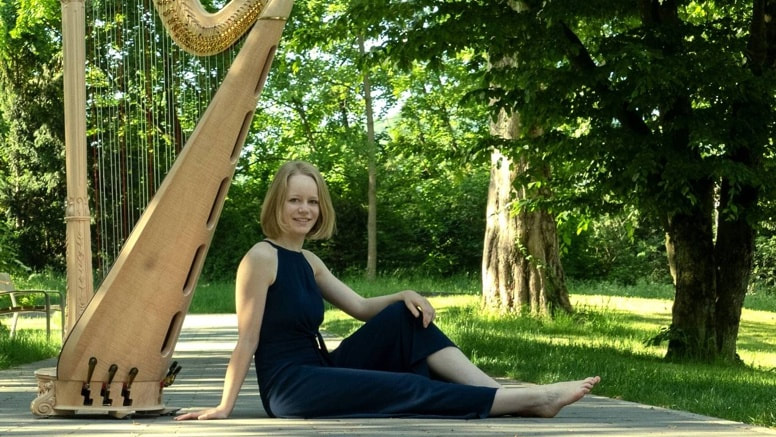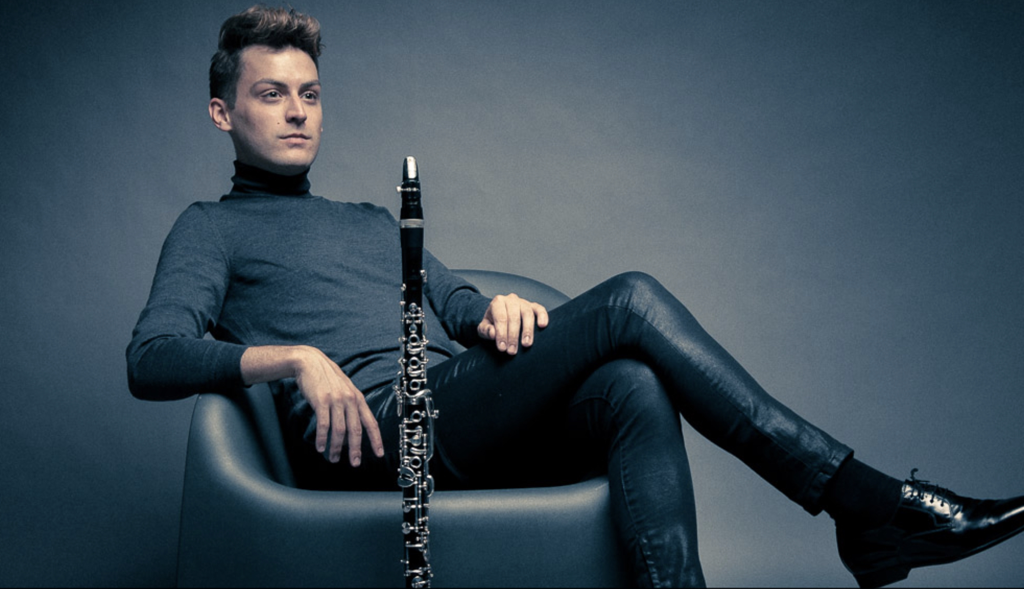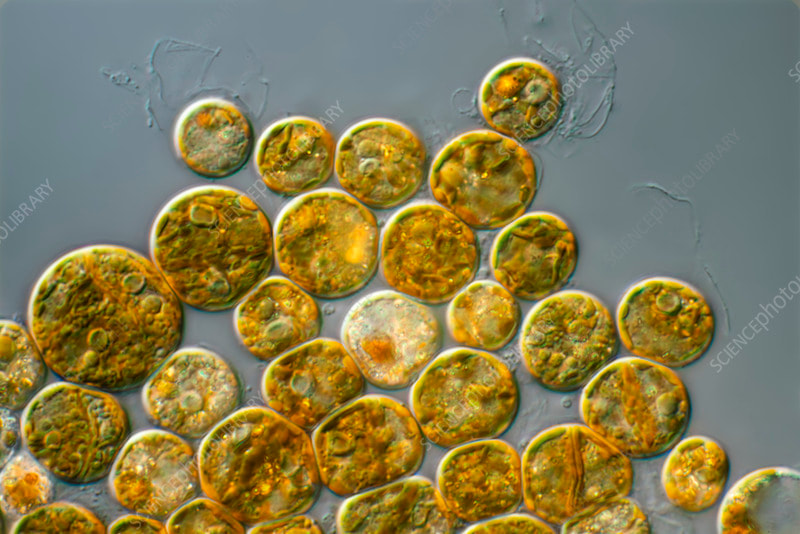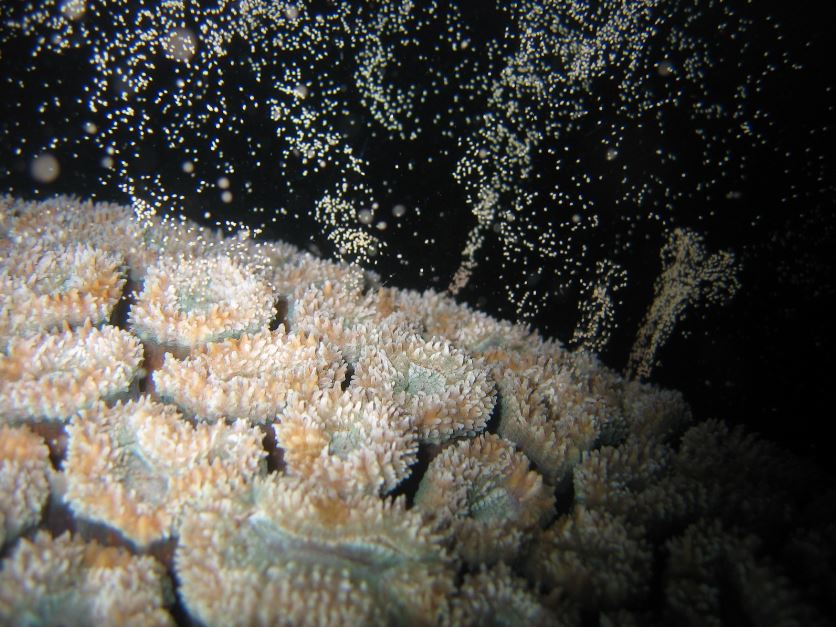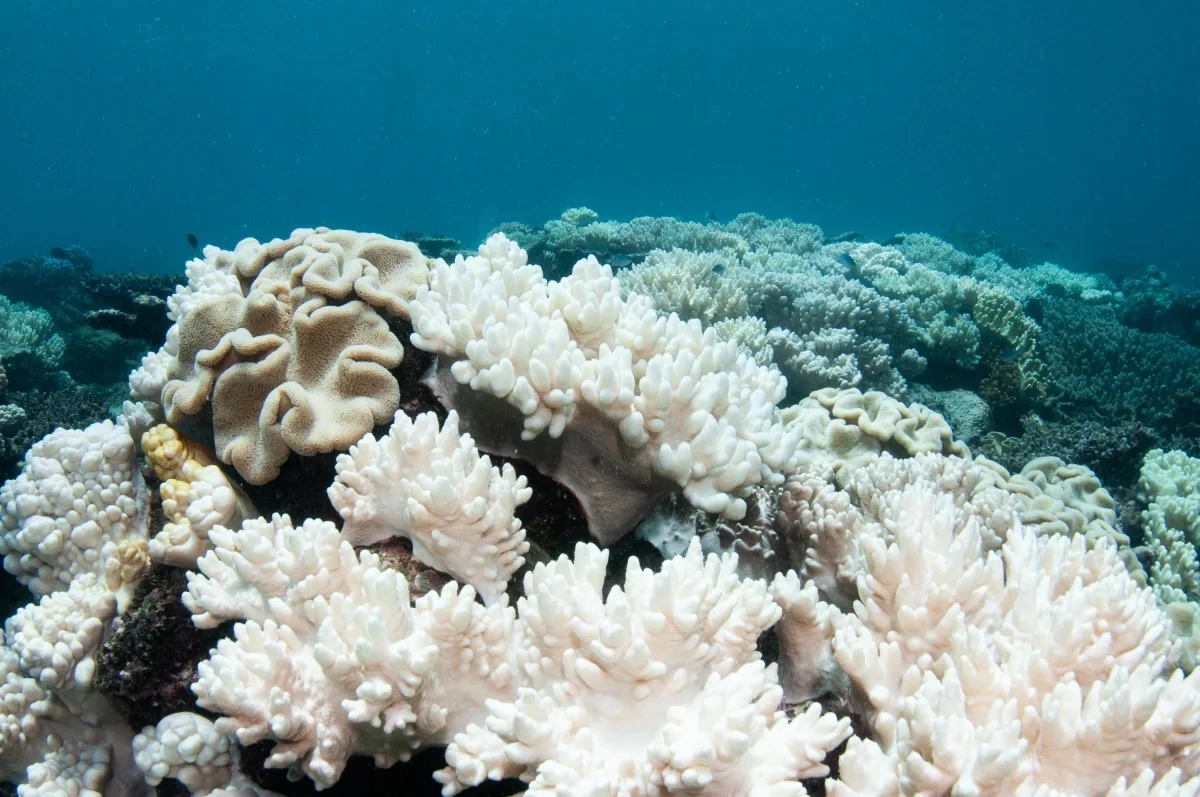Three paintings and one interview - four parts composition
These paintings are the basis for the composition and all colour fields are a representation of harmonies appearing in the composition. The original title of the paintings is "triptych for jazz" and the idea was that each color block and each color would represent a harmonic, so the paintings are a way of notation, with the music to be composed. These harmonies are to be married with the theme of bioacoustics and research of prof Steve Simpson (University Bristol) about the bioacoustics of coral reefs. The interview will be played in full (ca 11 min) as part two of the concert. The composition will translate all three paintings and the challenge is to integrate the theme and the color harmonies into one piece of music. The piece will be 45 min in total, of wicht 33 min will be original composition. The first part will be percussion (various instruments including percussion on a grand piano), the third and fourth part will be led by harp, cello and another instrument.
1Part I - Instruments
|
2Part II - Podcast
|
3Part III - Instruments
|
4Part IV - Instruments
|
|
Printed booklet (edition 5) for composer and sponsor.
|
The composition process is starting end of January. The composition will be based on two sets guidelines - one developed from the triptych painting (harmonies) and a second based on the musicality of Prof Steve Simpsons Interview and the bioacoustics recorded in the great barrier coral reef, also represented in the interview.
End of January Steffen Merkel will start identifying/collecting percussive elements and vocabulary and later we continue this process with cellist Tristan X Köster and Samira Nowarra on the harp. Parallel and with exchange meetings, Dominic will start create his composition (tbc). He may add one or two instruments. I would love to musicalise a non instrument, like a diving pack, connecting to the sea, but that's just a nice to have. |
The musicians
|
Steffen Merkel, Percussion
|
Samira Nowarra, Harp
|
Tristan X Köster, Cello
|
|
Roman Gerber, Clarinet
|
Dominic Wills, Composer (tbc)
|
Hacked Steinway D
Piano without pianist. Hacked by harpist, percussionist and cellist, similar to a coral reef frequented by different sea animals
|
Research phase
Visit Aquarium Shop Atlantis
CONCERT DATES TO BE CONFORMED
PART/AKT I
|
10min
Instruments:
Every element and colour block in the painting is to be represented by harmonies, music, rhythm and in the order of their vertical appearance. Here is my interpretation as a first suggestion, other narratives are possible.
*CORALS (WIKIPEDIA)
Corals are marine invertebrates within the class Anthozoa of the phylum Cnidaria. They typically form compact colonies of many identical individual polyps. Coral species include the important reef builders that inhabit tropical oceans and secrete calcium carbonate to form a hard skeleton. A coral "group" is a colony of very many genetically identical polyps. Each polyp is a sac-like animal typically only a few millimeters in diameter and a few centimeters in height. A set of tentacles surround a central mouth opening. Each polyp excretes an exoskeleton near the base. Over many generations, the colony thus creates a skeleton characteristic of the species which can measure up to several meters in size. Individual colonies grow by asexual reproduction of polyps. Corals also breed sexually by spawning: polyps of the same species release gametessimultaneously overnight, often around a full moon. Fertilized eggs form planulae, a mobile early form of the coral polyp which, when mature, settles to form a new colony. Although some corals are able to catch plankton and small fish using stinging cells on their tentacles, most corals obtain the majority of their energy and nutrients from photosynthetic unicellular dinoflagellates of the genus Symbiodinium that live within their tissues. These are commonly known as zooxanthellae and give the coral color. Such corals require sunlight and grow in clear, shallow water, typically at depths less than 60 metres (200 feet; 33 fathoms). Corals are major contributors to the physical structure of the coral reefs that develop in tropical and subtropical waters, such as the Great Barrier Reef off the coast of Australia. These corals are increasingly at risk of bleaching events where polyps expel the zooxanthellae in response to stress such as high water temperature or toxins. Other corals do not rely on zooxanthellae and can live globally in much deeper water, such as the cold-water genus Lophelia which can survive as deep as 3,300 metres (10,800 feet; 1,800 fathoms).[1] Some have been found as far north as the Darwin Mounds, northwest of Cape Wrath, Scotland, and others off the coast of Washington state and the Aleutian Islands. |
PART/AKT II
Part II will present the full unedited interview without any interaction with composition/music.
BBC Earth Podcast with Prof Steve Simpson (start min 15:40-25:14)10min
BBC Earth podcast no 12, "Pulling Power", Oct/2022: min 15:40 - 25:14: https://player.fm/series/bbc-earth-podcast/pulling-power Scuba diving in a coral reef is one of the most fantastic experiences you can have in nature. It’s like visiting the busiest market place, where you’ve got huge amounts of color of movement. Lots of different animals interacting with each other. Sometimes huge schools of fish all the same colour. Swimming in unison. Occasionally really exciting bigger predators like sharks or even dolphins swimming around on a reef.
But its only really recently that we have started to listen to the coral reefs as well. And sometimes that means trying to do it without scuba diving equipment that can often be the dominant sound you hear when you are diving. |
|
So if you drop a hydrophone, an underwater microfone onto a reef the whole thing comes to life in an entirely new dimension.
So you start to hear first of all this constant crackling sound from snapping shrimp. And on top of that sound which sounds kind of like bacon sizzling in a pan or rain beating down on a roof. You have got all of the different fish species that can vocalise and that’s hundreds, possibly thousands of species, that all have their own sounds. They can cause pops or pulses ‘bop bop bop bop’ sounds, whooping sounds ‘whoop whoop’ and then grunting deeper rasping sounds. Parrot fish scraping away on the reef and there are croaking sounds. Some can sound quite tonal, almost like they’re singing. So when you put all of that together you’ve got a carneval of life. And it sounds like you’ve got a very busy fairly uncoordinated orchestra all desperate to make their sound heard. So almost all animals that we see living on coral reefs actually have two parts of their life cycle. So whether its crab or lobsters or fish or even corals, they produce eggs in the breeding seasons and when fertilised those eggs then tend to be very boyant, they float up to the surface and the current take those eggs out to sea where they hatch. And its there where the larvae of the animal then develop. So what’s amazing is that every animal we have looked at responds to sound and uses this as a way of choosing where to live. Lobsters and crabs and oysters and clams are all able to detect the sound. Move towards the direction of the sound and use it as a way of settling down onto a reef. Few years ago we had all our equipment in curaçao, an island in the southern Caribbean where by chance another team were separately looking at coral sporning. And they were out each night collecting larvae corals. And they are really tiny pin haired balls. They look almost like fuzzy tennis balls as they swim around. And they asked weather they could borrow our acoustic equipment to find out weather their coral larvae also move towards the sound. Naively I said there is no chance this could be possible. These coral larvae don’t have a brain, they don’t have a central nervous system, but sure enough as soon as we started playing sound through the speakers, these coral larvae started moving towards the direction of the sound. Somehow they could detect it and it changed their swimming behaviour. When you look at a coral larvae it is hard to imagine how it can hear, how it can choose where to live based on the sound. So we brought some of these coral larvae into the lab here at the university in Bristol where we were able to fire miniature lasers onto the hair cells on the outside of the coral. And by playing different sounds to that coral larvae we could see the hair start moving in different ways using the lasers. So when the coral encounters a healthy soundscape, the hairs all start moving in a synchronised way which causes a spiral downwards swimming motion which brings that coral larvae down to the seabed. We now realise that when we play the sounds of a degraded coral reef, which isn’t such a great place for the coral to make their home, it just keeps swimming in mid water. They don’t swim towards the sound. But as soon as we switch the track so that it sounds like a healthy coral reef. This behaviour completely changes. They move into a spiralling downwards synchronised movement. Almost like synchronised swimmers. And that allows them to parachute down into the habitat where they gonna have the best chances of surviving. The dance of the pin hair balled coral larvae parachuting down into their future habitat and creating their own soundscapes. As quickly as we are making these discoveries about the natural world, the really sad part of our work is realising how quickly these natural queues can be lost. We’ve been working on the Great Barrier Reef for 20 years. And recently we’ve heard the reef die. A bleaching event in 2015 wiped out over half the corals. With painful predictability we saw the water temperature starting to rise. Oceanographic conditions meant that the water was staying at one location and for three weeks, the Great Barrier Reef cooked. It’s just empty its got this sense of death in the recording. There is almost no sound. An occasional snapping shrimp or a fish vocalising. Calling out but no response. It’s just this hollow ghostly environment that you knew once was a carnival of life. When we visit the reefs after the bleaching event its completely different. The colour has gone, the carnival of life has now gone away. The circus has moved on. It looks like a film set to a kind of desolate graveyard of dead coral all overgrown with seaweeds. Very odd occasional fish swimming around looking out of place because of their bright colours. And it brings me to tears. Now these are gradual changes, over fishing, poor management, climate change. But we also realise when we make our recordings on an every day to day basis we change the soundtrack of the ocean. By driving motor boats. Millions of motorboats every day drive around coral reef environments. With engine that rattle, with propellers that cavetate creating bubbles which screech in the water as they burst. And we've realised that the sound causes stress with the animals that experience it. And with stress comes poor decisions. The fish no longer respond to predators, to be able to find food, to court, to be able to successfully reproduce. This motorboat noise is a form of noise pollution that makes us realise that we are changing the soundtrack of the ocean. But despite some of what we see. I still remain optimistic for the future. Partly because I think that we have it in our gift to actually fix the environment. To fix the climate over the next century. But also because when we start to give nature a chance we rebuild coral reefs and we give them greater protection, we hear this in our recordings, we hear the reefs recovering. We hear the animals coming back. Its like the Orchester now has all its musicians coming back one by one picking up their old instruments, starting to play again and the sinfonie of the reef of a healthy biodiverse reef then starts to come back over a period over two or three years. So now we realise that when we hear the reefs recovering when we give them a chance. We found a way that we can actually hack into this and put recovery on steroids. Taking it one step further by using recordings of healthy reefs and playing those back at restoration areas. As soon as the animals start coming in based on the sounds we are playing back they make it their home. And they make that reef soundscape come back as a natural phenomenon of the reef. Calling in future generations. So its only a short intervention that we need to do to give that reef a chance of survival. Important detail is that apparently the project presented by Prof Simpson appears to be the research of his research student Dr Tim Lamont. But he is not mentioned in the interview. Here is the interview with Dr. Tim Lamont relating to the same project.
https://www.bbc.co.uk/programmes/m001cp9f |
PART/AKT 3+4
Part III and IV will initially connect to the interview and again combine sound characteristics of interview, bioacoustics coral reef and harmonies of the color blocks in the paintings to create a composition. We can start with retelling the narrative of the interview but also the music can go free and wild here to establish its own personality.
|
Part III
10 min Instruments:
|
Part IV
10 min Instruments:
|







